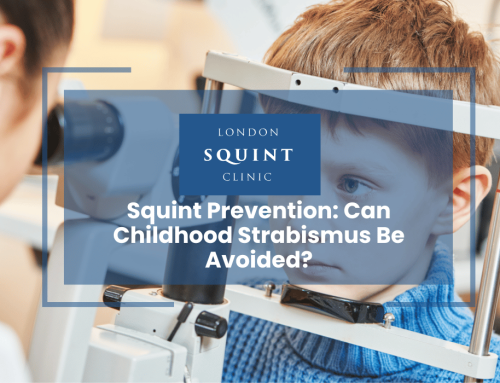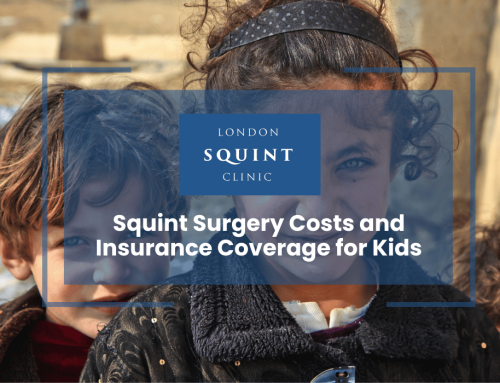Glasses Fitting for Active Children: Ensuring Comfort and Security
Essential Insights for Children’s Eyewear Success
- Proper glasses fit is critical for children’s visual development, with incorrect fitting potentially negating prescription benefits and affecting academic performance.
- Well-fitted children’s frames should feature appropriate bridge support, secure temples, and lightweight, durable materials aligned with the child’s facial structure.
- Accurate measurements—including pupillary distance, frame width, and temple length—form the foundation of proper pediatric eyewear fitting.
- Active children benefit from specialized securing techniques like silicone ear grips, adjustable head straps, and spring hinges to keep glasses in place during movement.
- Sports-specific eyewear with impact-resistant polycarbonate lenses and secure-fitting frames is essential for young athletes requiring vision correction.
- Regular professional adjustments every 3-4 months and frame replacements every 12-24 months accommodate children’s growth and ensure optimal vision correction.
Table of Contents
- Why Proper Glasses Fitting Matters for Children’s Development
- Key Features of Well-Fitted Children’s Eyewear
- How to Measure and Fit Glasses Correctly for Kids
- Securing Techniques for Active Children’s Glasses
- Sports-Specific Eyewear Solutions for Young Athletes
- Troubleshooting Common Fitting Problems in Children’s Glasses
- When to Schedule Adjustments and Replacement Frames
Why Proper Glasses Fitting Matters for Children’s Development
Properly fitted glasses are crucial for children’s visual development and overall well-being. Unlike adults, children’s visual systems are still developing, making correct prescription and fit essential for preventing long-term vision problems. When glasses don’t fit correctly, children may look over or under the lenses, effectively negating the therapeutic benefit of their prescription.
Poor-fitting glasses can directly impact a child’s academic performance, as approximately 80% of classroom learning is visual. Children who struggle with ill-fitting eyewear often experience headaches, eye strain, and reduced concentration. These discomforts can lead to glasses avoidance, which is particularly problematic for children with amblyopia (lazy eye) or strabismus (squint) who require consistent vision correction during critical developmental periods.
Furthermore, uncomfortable glasses can affect a child’s self-esteem and willingness to wear their prescription consistently. Research shows that children are more likely to comply with vision therapy when their glasses are comfortable and secure. For active children, proper fitting becomes even more critical as poorly fitted frames can become a safety hazard during physical activities.
Key Features of Well-Fitted Children’s Eyewear
Well-fitted children’s eyewear incorporates several essential features that ensure both comfort and functionality. The bridge fit is paramount—children typically have underdeveloped nasal bridges, requiring frames with adjustable nose pads or saddle bridges that distribute weight evenly. This prevents the common problem of glasses sliding down, which can lead to looking through the wrong part of the lens, particularly problematic for those with astigmatism or progressive prescriptions.
Temple length and design are equally important. Ideally, temples should extend straight back before curving comfortably around the ears. For younger children, wraparound temples or curl-around ends provide additional security. The frame width should align with the child’s face, with eyes centred in each lens and frames not extending beyond the sides of the face.
Material selection plays a crucial role in durability and comfort. Lightweight materials such as flexible titanium alloys, TR-90 nylon, or polycarbonate frames offer the best combination of comfort and resilience for active children. These materials can withstand the inevitable drops and bends that occur during play while remaining comfortable during extended wear.
The lens positioning relative to the eyes must be precise, with the optical centre of each lens aligned with the pupil. This alignment is particularly critical for children with strabismus or high prescriptions, where even minor misalignments can reduce the therapeutic effect of the glasses.
How to Measure and Fit Glasses Correctly for Kids
Accurate measurement is the foundation of proper glasses fitting for children. Professional fitting begins with determining the pupillary distance (PD)—the measurement between the centres of the pupils. This measurement ensures the optical centre of each lens aligns precisely with the child’s line of sight. For children with strabismus, additional measurements may be necessary to accommodate their specific eye alignment needs.
Frame width should be proportional to the child’s face, typically measured from hinge to hinge. The ideal width allows approximately 2-4mm of space between the temple and the side of the head. Bridge width is equally important—too wide and the glasses will slide down; too narrow and they’ll pinch uncomfortably. For children with underdeveloped nasal bridges, frames with adjustable nose pads or specially designed saddle bridges provide better support.
Temple length must be measured from the frame front to the bend that goes behind the ear, plus the length needed to curve comfortably around the ear. For active children, slightly shorter temples with secure wrapping ends often provide better stability during movement.
The vertical height of the frame should ensure the child’s line of sight passes through the optical centre of the lens, with the frame sitting just below the eyebrows. This positioning is particularly important for bifocal or progressive lenses, where improper height can render portions of the prescription ineffective.
During fitting, observe the child’s natural head position and ensure the frames sit symmetrically. The weight should be evenly distributed across the nose and ears, with no pressure points that could cause discomfort during extended wear.
Securing Techniques for Active Children’s Glasses
Keeping glasses secure on active children requires strategic approaches beyond standard fitting. Silicone ear grips provide excellent retention by increasing friction between the temple arms and the ears. These soft, transparent sleeves slide onto the temple arms and create a gentle but effective grip that prevents slippage during vigorous movement. They’re particularly valuable for children with fine or straight hair that doesn’t naturally help secure glasses.
Adjustable head straps represent another effective solution, especially for very young children or during sports activities. These elastic bands attach to the temple ends and wrap around the back of the head, effectively converting standard glasses into goggles. Modern versions feature soft, adjustable neoprene that provides comfort while maintaining tension.
Cable temples (sometimes called “curl sides”) offer built-in security by wrapping completely around the ear. These are particularly effective for toddlers and preschoolers whose ear structure may not yet provide adequate support for standard temples. For children who frequently remove their glasses, cable temples create enough resistance to discourage casual removal while remaining comfortable for all-day wear.
Spring hinges provide additional flexibility and security by allowing the temples to extend slightly beyond their normal range without breaking. This feature accommodates the quick movements typical of active children while maintaining proper fit. The spring mechanism also helps the frames return to their proper position after being bumped or jostled.
For children who participate in water activities, securing cords that float can prevent glasses from sinking if they fall off. These specialised retention systems combine the security of a head strap with buoyancy features that keep glasses retrievable in aquatic environments.
Sports-Specific Eyewear Solutions for Young Athletes
Young athletes with vision correction needs require specialised eyewear solutions that combine optical precision with enhanced protection. Sports-specific glasses differ significantly from everyday frames, featuring impact-resistant polycarbonate lenses that meet or exceed safety standards. These lenses provide 100% UV protection and are typically treated with anti-fog coatings to maintain clear vision during physical exertion.
For contact sports like rugby or football, wraparound frames with padded bridges and temples offer maximum protection against impacts while minimising the risk of injury from the frames themselves. These designs eliminate gaps between the face and frame where fingers or equipment might otherwise intrude. Some advanced models incorporate foam padding that absorbs shock and prevents the frames from pressing into the face during collisions.
Racquet sports and cricket demand frames with secure retention systems and unobstructed peripheral vision. Specialised designs feature ventilation channels that reduce fogging while maintaining a close fit to the face. Adjustable nose pads allow customisation for different facial structures, ensuring the frames stay precisely positioned during rapid head movements.
Swimming presents unique challenges for children requiring vision correction. Prescription swim goggles with silicone seals and adjustable straps provide water-tight protection while delivering accurate vision correction. For children with mild to moderate prescriptions, these specialised goggles often represent a more practical solution than attempting to secure regular glasses.
For children who participate in multiple sports, convertible eyewear systems offer versatility through interchangeable components. These systems typically feature a base frame that accepts different temple styles, straps, and lens shapes appropriate for various activities, providing a cost-effective solution for multi-sport athletes.
Troubleshooting Common Fitting Problems in Children’s Glasses
Even with careful initial fitting, children’s glasses may develop issues that require troubleshooting. Constant slipping down the nose typically indicates either a bridge that’s too wide or temples that are too loose. For frames with adjustable nose pads, gently pinching them closer together can create a more secure fit. For plastic frames without adjustable pads, a qualified optician can add silicone nose pads or heat-adjust the frame for a better contour.
Frames that sit asymmetrically often result from uneven ear heights or facial asymmetry—common in developing children. This can be corrected by carefully adjusting one temple arm higher than the other to compensate. If a child consistently pushes their glasses up with one finger, this indicates they’re sliding down and likely need adjustment of the nose pads or temple tension.
Red marks or indentations on the nose or behind the ears suggest pressure points that require immediate attention. These can lead to discomfort and reluctance to wear glasses. For nose indentations, widening the nose pads or bridge can distribute pressure more evenly. For ear discomfort, adjusting the temple curve or adding soft silicone ear covers can alleviate pressure while maintaining security.
Fogging lenses, particularly problematic during mask-wearing or temperature changes, can be addressed with anti-fog treatments or adjusting the frame to sit slightly further from the face. If a child frequently removes their glasses due to discomfort, systematic assessment of all contact points is necessary to identify the specific source of irritation.
For frames that twist or warp easily, reinforced materials or more durable designs may be necessary. Children who frequently remove glasses with one hand often create asymmetrical tension that gradually distorts the frame alignment, requiring regular professional readjustment.
When to Schedule Adjustments and Replacement Frames
Regular maintenance and timely adjustments are essential for ensuring children’s glasses continue to fit properly as they grow. Most children require frame adjustments every 3-4 months, though active children or those experiencing growth spurts may need more frequent attention. Professional adjustments should be scheduled immediately if the child reports discomfort, constantly pushes their glasses up, or if the frames appear visibly misaligned.
Growth-related changes typically necessitate complete frame replacement every 12-18 months for children under 10, and every 18-24 months for older children. However, these timeframes can vary significantly based on individual growth patterns. Key indicators that replacement is needed include: temples extending straight back without properly curving around the ears, frames sitting too high or low relative to the pupils, or the child’s peripheral vision being obstructed by the frame edges.
Material fatigue represents another consideration for replacement timing. Most children’s frame materials gradually lose their flexibility and adjustment capacity after repeated bending. Polycarbonate frames typically maintain their integrity for 12-24 months of regular use, while metal frames may require replacement sooner if the child has acidic skin chemistry that accelerates corrosion of hinges and adjustment points.
Prescription changes should always trigger a fitting reassessment, as different lens thicknesses and weights can affect how frames sit on the face. Children undergoing active amblyopia treatment or those with rapidly changing refractive errors may require more frequent frame updates to accommodate their evolving optical needs.
Establishing a relationship with a paediatric optician who specialises in children’s eyewear ensures proper monitoring of fit over time. These specialists can maintain records of a child’s measurements and growth patterns, anticipating adjustment needs before discomfort develops and recommending appropriate replacement timing based on the child’s specific wearing patterns and activities.
Frequently Asked Questions
How do I know if my child’s glasses fit properly?
Properly fitted glasses should sit symmetrically on your child’s face with eyes centered in each lens. The frames shouldn’t pinch the nose or ears, slide down frequently, or extend beyond the sides of the face. The temple arms should extend straight back before curving comfortably around the ears, and when your child looks straight ahead, their eyes should look through the optical center of each lens. If they’re constantly pushing their glasses up or complaining of discomfort, it’s a sign that adjustments are needed.
How often should children’s glasses be adjusted?
Most children require frame adjustments every 3-4 months to accommodate growth and maintain proper fit. Active children or those experiencing growth spurts may need more frequent adjustments. Schedule immediate adjustments if your child reports discomfort, constantly pushes their glasses up, or if the frames appear visibly misaligned. Complete frame replacement is typically needed every 12-18 months for children under 10, and every 18-24 months for older children.
What’s the best way to keep glasses on an active child?
For active children, consider frames with spring hinges, cable temples that wrap around the ears, or silicone ear grips that increase friction between the temple arms and ears. Adjustable head straps that convert standard glasses into goggles are excellent for sports or very young children. Lightweight, flexible materials like TR-90 nylon or titanium alloys provide durability while remaining comfortable. For sports, specialized wraparound frames with secure retention systems offer maximum protection and stability.
Why does my child need different glasses for sports?
Regular eyeglasses aren’t designed to withstand the impacts, movements, and conditions of athletic activities. Sports-specific eyewear features impact-resistant polycarbonate lenses, secure retention systems to prevent slipping during movement, and often includes wraparound designs that protect the eyes from peripheral impacts. These specialized frames also typically incorporate anti-fog coatings, UV protection, and padding to prevent injury from the frames themselves during collisions. For contact sports, properly fitted sports eyewear can prevent serious eye injuries while maintaining vision correction.
How do I measure my child for new glasses?
Professional measurement is strongly recommended for children’s eyewear. Key measurements include pupillary distance (PD) to align the optical centers with the pupils, frame width proportional to face size (typically allowing 2-4mm space between temple and head), appropriate bridge width for their nasal structure, and temple length that extends comfortably around the ears. For children with underdeveloped nasal bridges, frames with adjustable nose pads or specially designed saddle bridges provide better support. A pediatric optician can take these measurements accurately while considering your child’s prescription requirements.
What should I do if my child refuses to wear their glasses?
Resistance to wearing glasses often stems from fit issues or discomfort. First, have the fit professionally checked for pressure points, slipping, or alignment problems. Ensure the frames match your child’s personal style preferences and involve them in the selection process. For younger children, establish consistent wearing routines and use positive reinforcement. If discomfort isn’t the issue, consider whether teasing is occurring at school and address this with appropriate support. For children with sensory sensitivities, ultra-lightweight frames with minimal contact points may improve acceptance.
How can I tell if my child has outgrown their current glasses?
Signs that your child has outgrown their glasses include: frames sitting too high (above eyebrows) or too low (resting on cheeks), temples no longer curving properly around the ears, frequent slipping despite adjustments, red marks or indentations from pressure points, complaints about headaches or eye strain, or the child looking over the top of the lenses rather than through them. The bridge may appear too tight or too loose, and the overall proportion of the frames to the face may look unbalanced. Regular check-ups with an optician every 3-4 months can help identify when replacement is needed before these issues affect vision or comfort.
Find out if you are suitable for Double Vision Treatment
Not everyone is eligible for double vision surgery.
Find out if you could benefit from this life-changing surgery by taking the quick self-suitability quiz below:
Our most popular procedures

Hello, I’m Nadeem Ali
I’m one of the few eye surgeons in the world with 100% focus on Squint and Double Vision Surgery.
I have 24 years of eye surgery experience, and worked for 13 years as a Consultant at London’s renowned Moorfields Eye Hospital.
In 2023, I left the NHS to focus fully on treating patients from across the world at the London Squint Clinic. You can read more about me here.
There’s lots of information on the website about: squint surgery, double vision surgery and our pricing.
The most rewarding part of my job is hearing patients tell me how squint or double vision surgery has changed their lives. You can hear these stories here.
Mr Nadeem Ali
MA MB BChir MRCOphth FRCSEd(Ophth)





